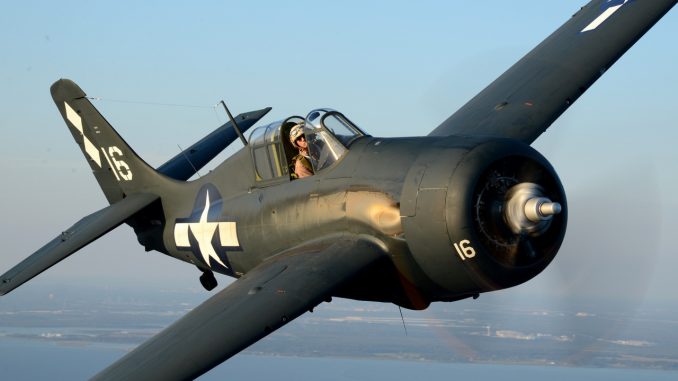
By Luigino Caliaro.
Last year, the American warbird scene was marked by the arrival of a new restoration company on the world stage. Conrad Huffstutler’s Wild Warbirds took home both the Reserve Grand Champion WWII and the Gold Wrench Awards at the EAA’s AirVenture 2013 for their very first restored aircraft, an FM-2 Wildcat. Huffstutler is just 25 years of age, but has always breathed the oxygen of aviation. His father Mark is the owner of Sierra Industries of Uvalde, Texas, a company engaged principally in the maintenance and modification of business jets. The company also has interests in the warbird sector, having restored several particularly demanding aircraft such as the T-28 Trojan, T-33 Shooting Star, AT-6 Texan and P-51D Mustang. Conrad Huffstutler set up Wild Warbirds as an independent specialist warbird restoration company, but with access to some of the high-end, manufacturing resources at Sierra Industries in the adjacent hangars.
Huffstutler confirms that, “undoubtedly, thanks to the activities of my father, I grew up around aviation and airports. At fifteen I helped my father to rebuild a Piper J-3 Cub in which I made my first solo flight on the day of my sixteenth birthday. A passion for historic aircraft has always been strong in me, and at eighteen I started to fly in a T-6, while my first solo flight in the family Mustang was at twenty one. In parallel, I always wanted to personally rebuild an aircraft and, with the support of my father, I founded Wild Warbirds. With this in mind, in 2009 I purchased the remains of three FM-2 Wildcat fighters with the intention of returning at least one of the three to airworthy condition. These aircraft were Bu.86774, owned by the collector Ed Maloney (and which was the object of the restoration), all that remained of FM-2 N681S Bu.55585 of the Commemorative Air Force, which crashed at Ellington on October 18th, 2003, and the remains of FM-2 Bu.55404, recovered in 1993 from Lake Michigan. The condition of the aircraft was decidedly worrying, as in truth they were all relics, or little more. Fortunately however, what remained of Bu.86774 indisputably promised the best potential for restoration; albeit numerous parts were missing or damaged, amongst which were a missing engine and rudder, and the complete lack of the starboard wing. The fuselage of this aircraft was in decidedly better condition than those of the others, and less afflicted by corrosion. Having decided to return the aircraft to its original ‘as-in-service’ condition, I was forced to undertake extensive documentary research. Thanks to the drawings and documents provided by the Smithsonian Museum, I managed to restore and reconstruct many parts and components in a manner that was extremely faithful to the original Grumman specifications. The most demanding work was without doubt the complete reconstruction of the starboard wing, which [was] completely missing. I used the wing from the Wildcat recovered from Lake Michigan as a reference, and in order to avoid utilizing and mixing components from the various wrecks I opted for the complete reconstruction of the wing. Thanks to the support of technical and IT engineers at Sierra Industries, I was able to faithfully reproduce the wing using the same materials and working techniques. Particular attention was paid to the perfect restoration of the cockpit, using original instruments and reconstructing the missing panels, such as that carrying the selector for the armament and HVAR rockets.”
Wild Warbirds completely restored an original Mk.8 gunsight to serviceable condition for the project. The only “modern” equipment installed, the radio is concealed in the cockpit map compartment. It uses the aircraft’s original style antenna, with slight modifications, to transmit and receive messages. That being said, the original and fully functional WWII-era radios are installed in the correct compartment behind the cockpit.
One of the elements that distinguish this Wildcat from the other flying examples is the fitting of an original and operational Coffman cartridge starting system. According to Huffstutler, “the FM-2, as opposed to other Grumman aircraft produced during the conflict, adopted, in order to reduce weight, a cartridge starting system, rather than an electric starting system for the Wright Cyclone R-1820 engine. So I decided to restore the aircraft using an original starter system produced by Coffman which I had been able to track down. I have got a limited stock of the explosive cartridges, but luckily I have been able to locate a company willing to manufacture the cartridges once my stock of originals has run out, enabling me to operate the aircraft in a way that is unique in the warbird sector.” Another aspect that distinguishes this aircraft is that it uses the proper propeller type, with electric variable pitch control.
In respect of the aircraft’s performance, Conrad Huffstutler told us that, “it is an excellent aircraft, with good performance, and lacking in particular defects. Certainly, like all piston aircraft, you have to take account of the propeller torque, especially during take-off in crosswinds coming from the right…. the narrow undercarriage is unforgiving of errors. A further peculiarity of the Wildcat is the undercarriage retraction system. In fact, contrary to the majority of fighters of the period, the retraction process is manual, and the pilot has to use a lever on the right hand side of the cockpit. This fact forces the pilot to take the control column in his left hand, leaving the throttle control alone, and working the undercarriage lever with his right hand to bring up the gear, a process which takes around thirty rotations. This operation is fairly easy at speeds between 80 and 100 mph, but above those speeds the airflow makes the process very tiring. Another negative characteristic of the undercarriage is its narrowness… which [requires] you to take great care while taxiing, and during take-off and landing in order to avoid dangerous “ground loops”. These were four years of hard work, but I believe that the result that we can all admire today is ample repayment of the effort and research that were involved.”
HISTORY OF FM-2 BuNo 86774
Wild Warbirds’ rebuilt Wildcat rolled off the General Motors Eastern Aircraft Division production line in Linden NJ in mid-1945. They delivered her to the US Navy at NAS San Diego on August 17th, 1945. It never saw combat, as the war was over by that point, and the Navy retired her by November 30th that same year. The common story is that the tubby fighter survived those crucial years after the war serving the film industry as a wind machine. The wings were a hindrance for that occupation, so consequently, they departed the airframe, probably to the scrap yard. In 1957 famed warbird preservationist Ed Maloney acquired the by the then neglected fuselage. He found a spare wing, and fabricated a wooden replacement for the other, and placed the fighter on display, initially at the Air Museum’s base in Claremont, California, and later as a part of the Planes of Fame Museum at Chino.
In September 2009, Wild Warbirds acquired the airframe, restoring her to fly in June 2013. They painted her in the dark blue livery typical of FM-2s in the Pacific theatre during the final year of WWII. She wears the markings of an FM-2 in VC-79 embarked aboard the escort carrier USS Sargent Bay ( CVE-83). This Wildcat is now owned and operated by the Fagen Fighter WWII Museum.
More pictures of Luigino.

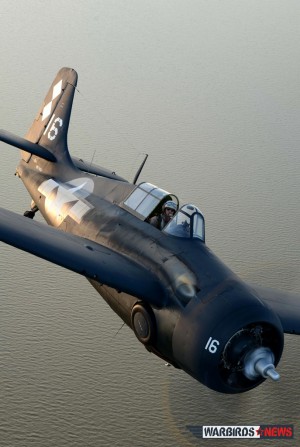
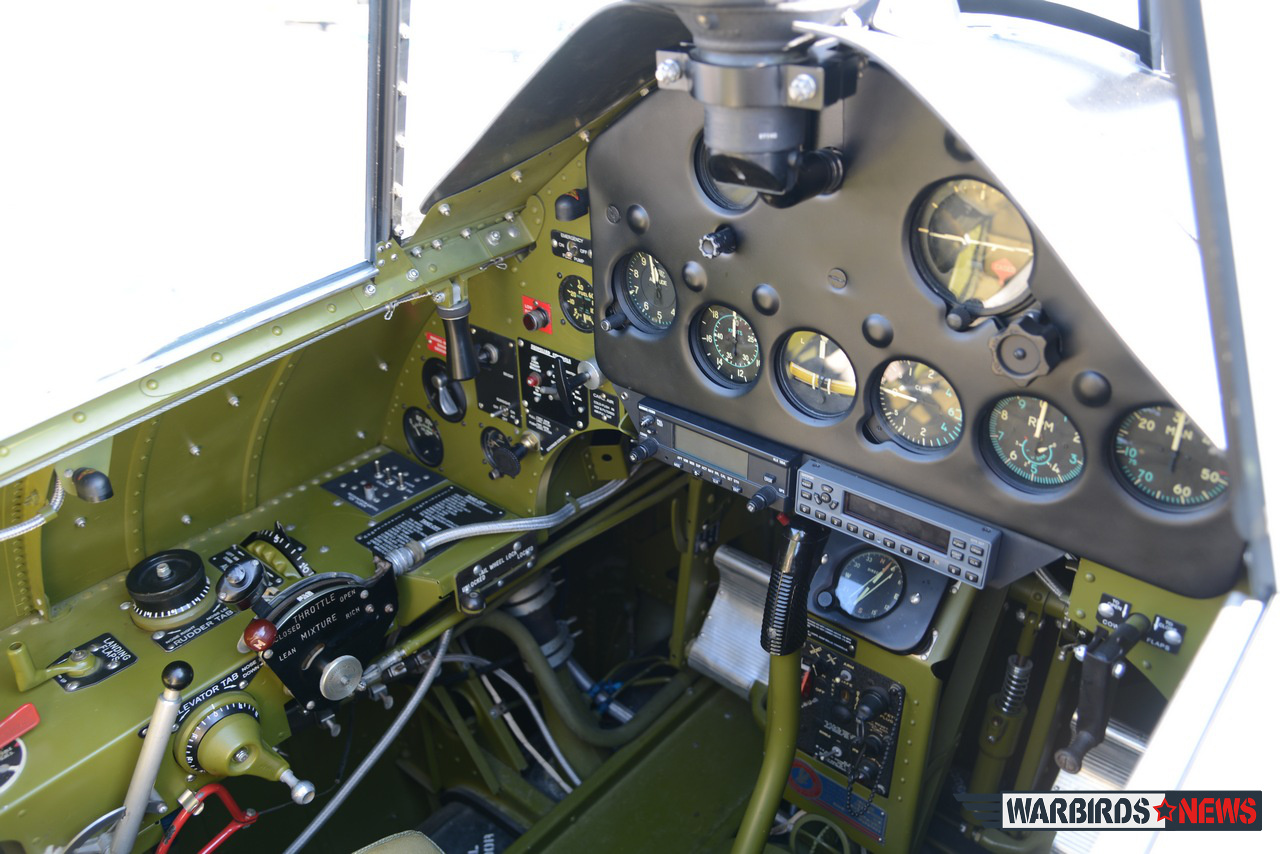
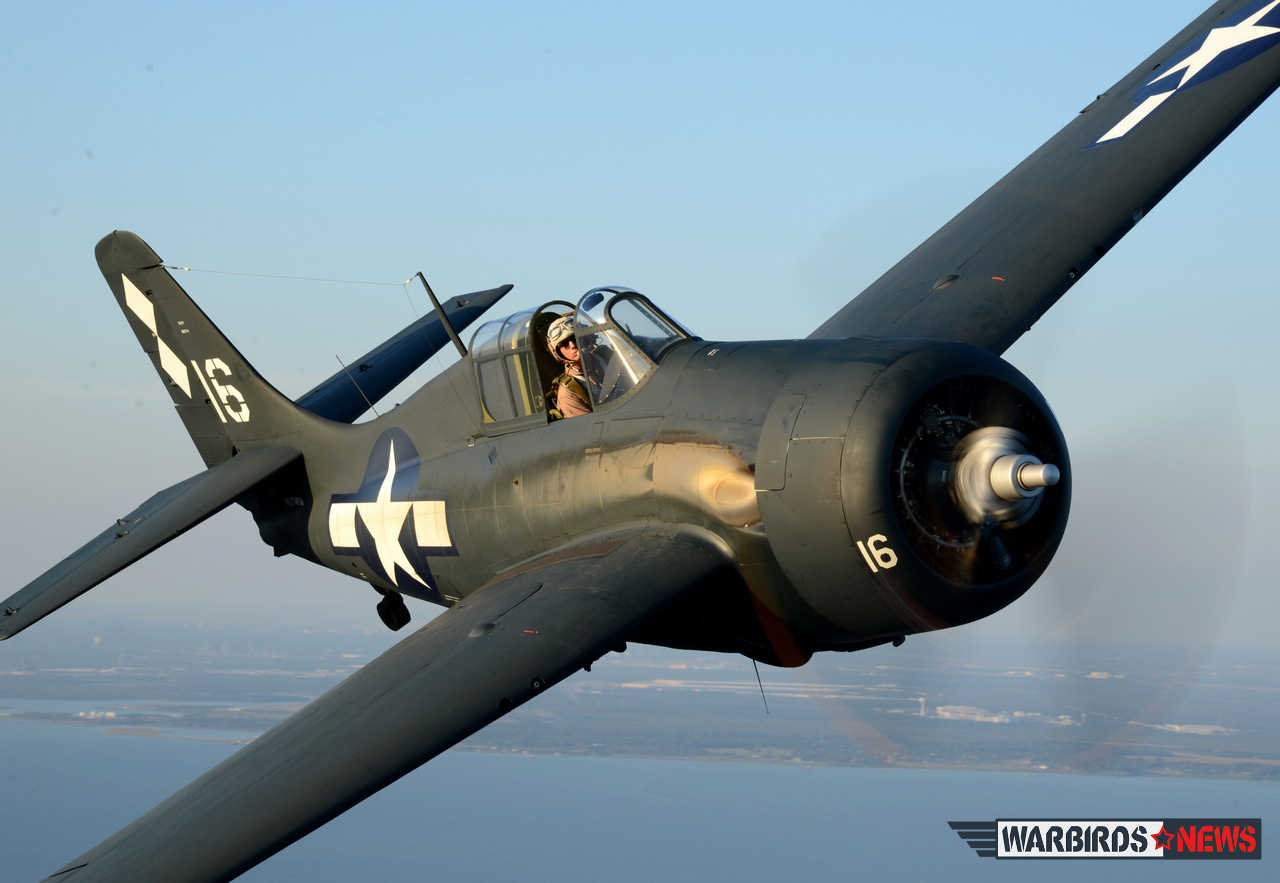
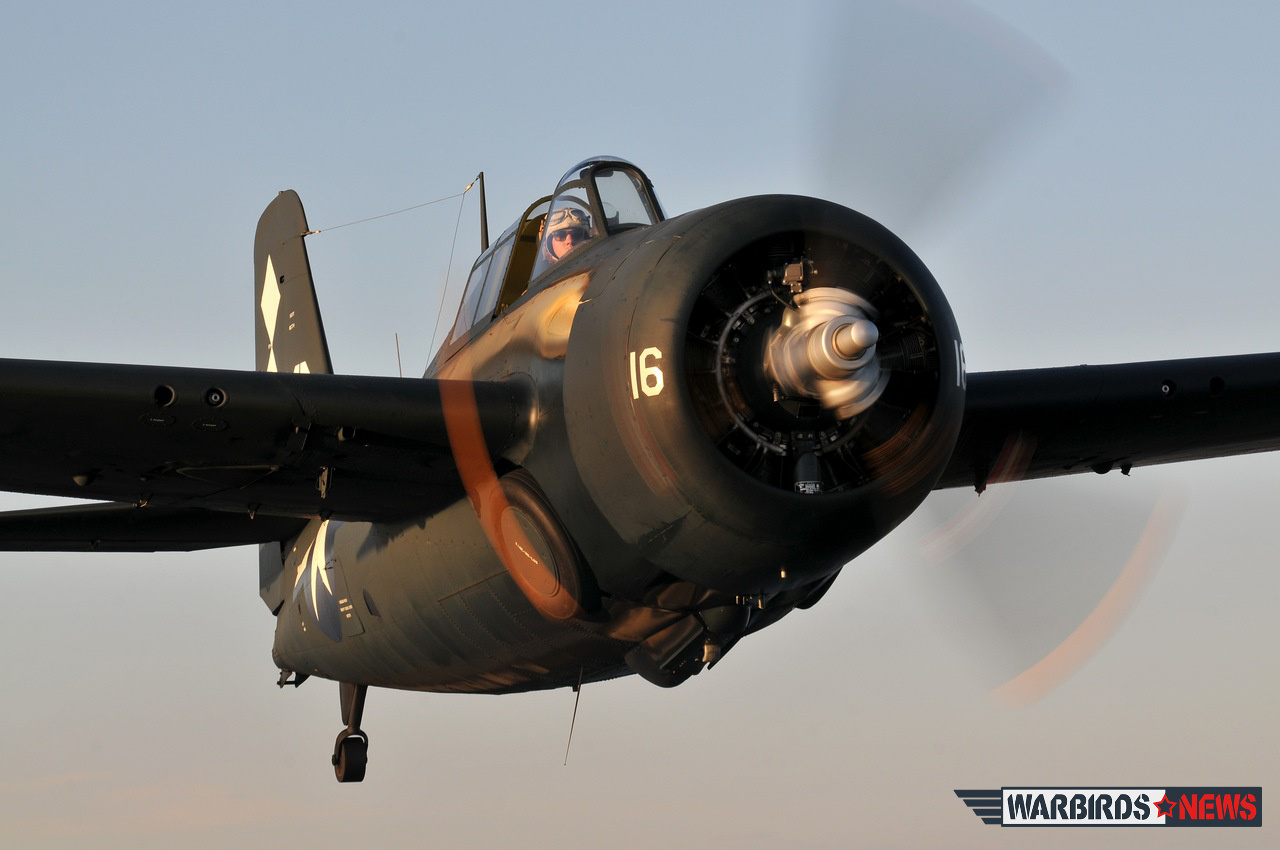
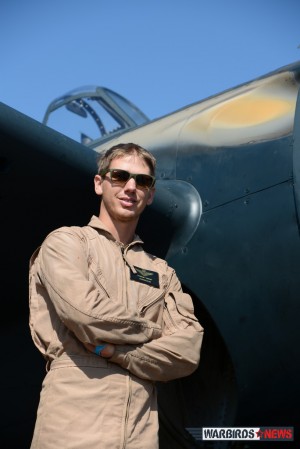
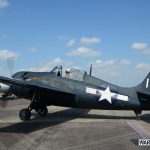
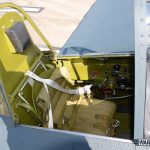
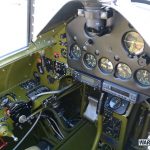
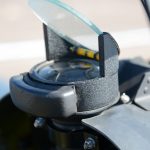
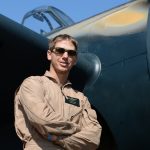
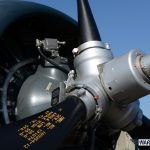
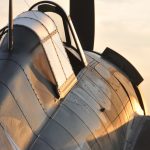
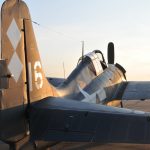
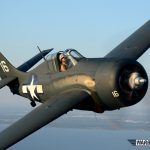
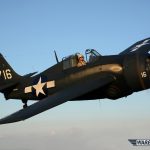
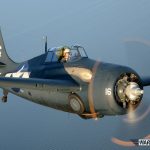
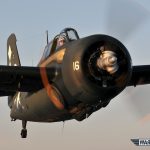
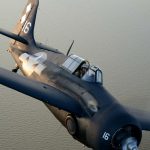
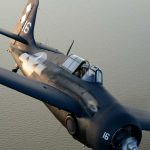
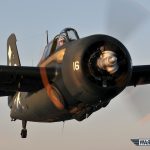
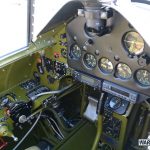
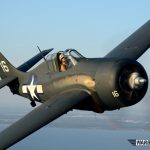

What a gorgeous restoration!
I retired from the Cradle of Aviation in Garden City, L.I., N.Y. in 2010 after 30 years doing various jobs including being part of a Grumman FM-2 Wildcat back in the early 80s.Our museum is dedicated to Long Island manufacturers including Grumman, Republic, Sperry, Edo etc. While involved in the project, I had the chance to visit a Grumman library/archive located in a block house type building in a corner of the Grumman plant property. I’m not sure of the libraries location but our curator Josh Stoff (www.cradleofaviation.org) would have that information. I enjoyed my time on the restoration crew (I was low man on the totem pole during the restoration) and the ex WW II Navy vets who were all knowledgeable about the Wildcat having worked or flown them during the war. I was a television Director in NYC full time so my restoration work took place on the one night of the week when we would gather in the un-restored hangar of what used to be Mitchell Field (the military side of Roosevelt Field where Lindbergh took off for Paris in 1927) where there was no heat in the winter and no air conditioning in the summer. We, too, have a Lake Michigan Wildcat (the FM-2 was returned to its owner, the son of the State Treasurer of Oregon) F4F-3 that we restored to cosmetic, static display and it is hanging (next to a full scale model of the F2A Brewster Buffalo0 while on the floor beneath them is our F6F-5 Hellcat and our TBM Avenger.
So, the reason I write, is to let you know that there may be a aource for Grumman information at the archive.
Regards, and “Keep em’ Flying”
Bill Coughlin
PLEASE LET ME KNOW IF THERE IS ANY STS FOR THE SMOKE SYSTEM ON T-6G AND WHELEN LED LIGHTS P/N 01-0790725-11 AND 01-0790725-12